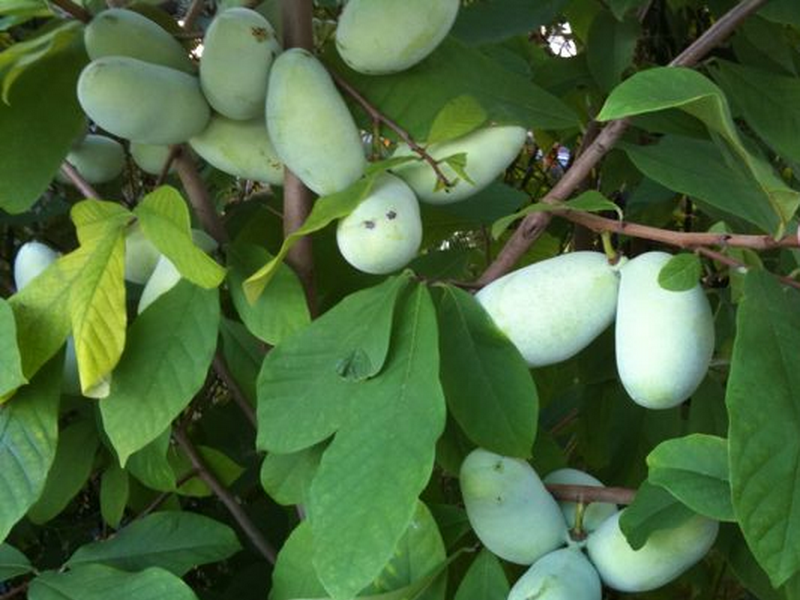Pawpaw Tree
Asimina triloba
Click here to download a PDF of this plant information page (for printing).

Sun Exposure: Sun, Pt Sun, Shade
Season of Interest: Summer, Fall
Bloom Time: March
Bloom Color: Copper
Height: 15 to 30 ft.
Spread: 20 ft.
Spacing: 25 ft.
Water Needs: Average
Maintenance: Prune for shape
Soil Type: Clay, Loam, Sandy
Soil pH: Acidic
Soil Drainage: Well drained
Pests: Squirrels eat the fruit
Diseases: Canker, Leafspot
Wildlife: Birds, Small mammals

Description:
The pawpaw is a small, deciduous tree that yields the largest fruit native to North America. Pawpaw trees can grow to a height of about 25 feet and feature maroon-colored blossoms with 6 petals in spring. When grown in shady and protected areas of established forests, they only get to be 2 to 12 feet tall. The leaves are dark green, shiny, and oval-shaped with pointy ends. They can grow up to 12 inches in length. In the fall, the foliage turns varying shades of yellow. These trees are famous for their fruit, which ripens in fall. The pawpaw fruit is frequently described as custard-like with a flavor that is a cross between a banana and a mango. For more information see:
plants.ces.ncsu.edu/plants/asimina-triloba
Care and Growing Tips:
With basic knowledge about the growing requirements, the pawpaw tree can successfully be grown as a tropical-looking addition to your garden and for its delicious fruit. Be sure to protect young trees from too much sun exposure and wind. If you’re hoping to harvest fruit from a pawpaw tree, be sure to plant several genetically different trees in close proximity.
In its natural habitat, the pawpaw tree is found in the understory of forests hence these trees flourish in partial shade. Young trees especially benefit from shady conditions, as bright, direct sunlight can scorch the leaves. Upon maturing, pawpaw trees can be grown in full sun conditions. These trees will have a more pyramid-like shape, while pawpaws in shade have spreading branches and fewer lower limbs. Soil conditions for the pawpaw must be rich and well-draining. For nutrient-poor soil, add compost to boost soil quality. The pawpaw can grow in heavy, clay soil but only if there is sufficient drainage. Slightly acidic to neutral soil pH levels are best for this tree. Young pawpaw trees will require regular watering. However, it’s important to ensure that the soil is draining efficiently and you don’t allow this tree to become waterlogged. Pawpaw trees planted in full sun location will benefit from additional irrigation to prevent dry soil conditions. Nutrient-rich soil is important for healthy growth and fruit production, so it’s generally recommended to fertilize pawpaw trees at least twice a year, once in spring and again in early summer. You can use a well-balanced fertilizer, like a 10-10-10 formula, applied with granules or in a liquid formula.